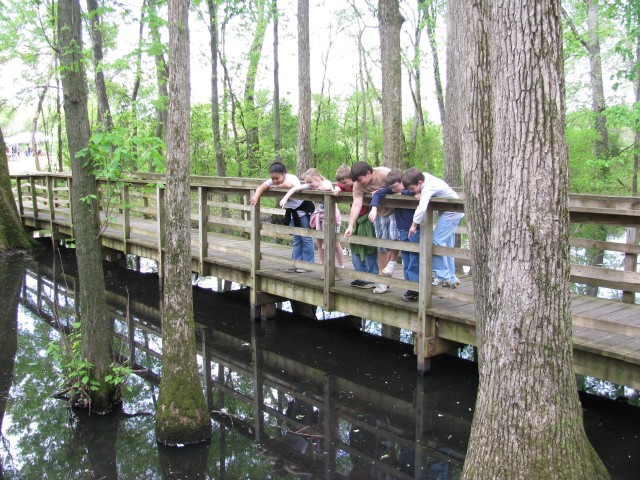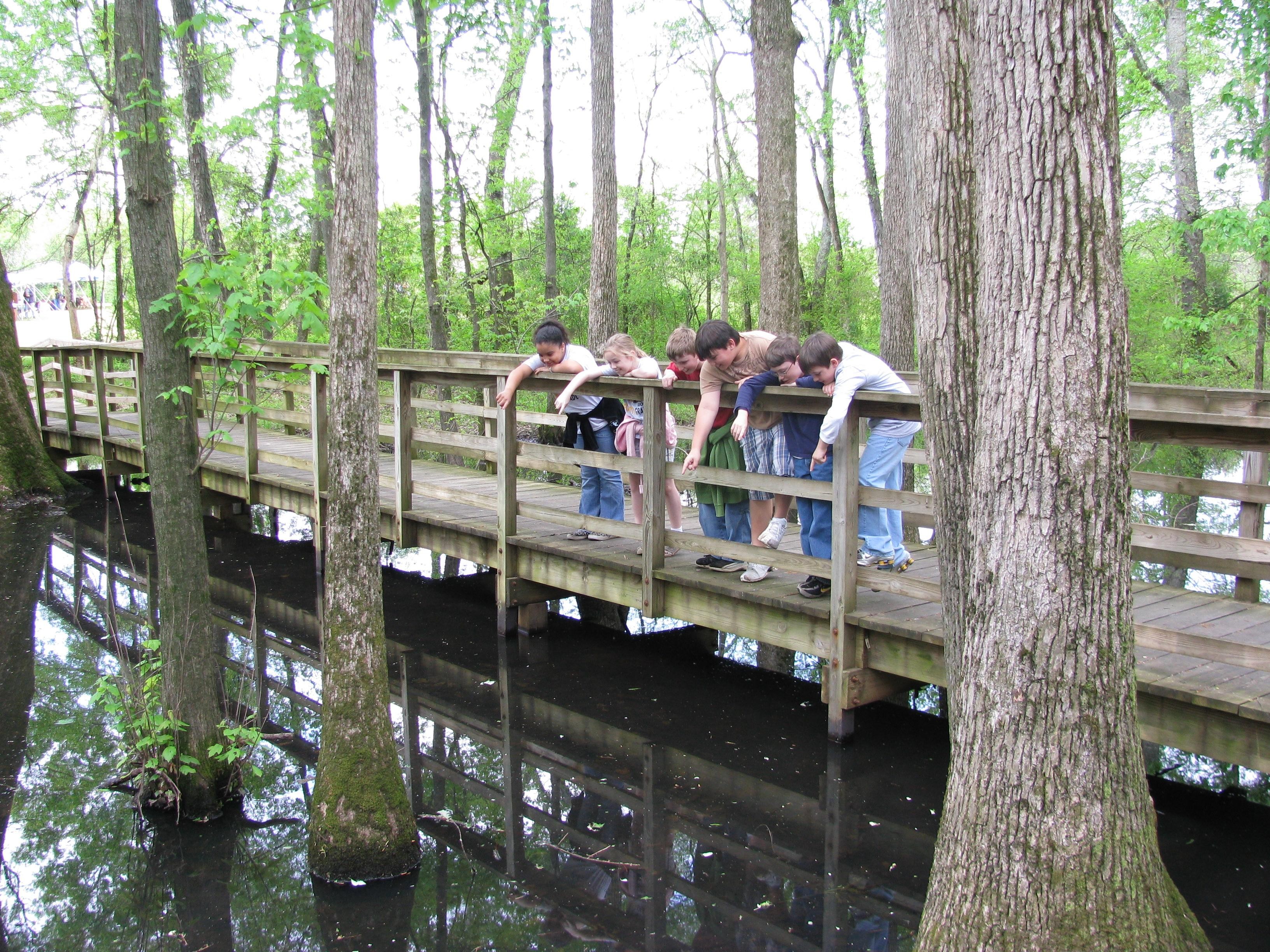Fourth- and fifth-graders from Priceville Elementary and from Monte Sano Elementary converged on the Outdoor Classroom at Redstone's Path to Nature to celebrate Earth Day on April 22.
The day began with 145 kids from Priceville and 40 from Monte Sano gathering under a tent to have a little chat with Garrison commander Col. Bob Pastorelli.
"We do this every year. It's our 15th year doing this on Redstone Arsenal," Pastorelli told the crowd. "I have an environmental division at the Garrison that works hand-in-hand with the community. They do our outreach and make sure we're doing what's right for the environment."
Before gathering around the site chosen to plant a tree this year, Pastorelli gestured to the mature trees around the clearing.
"We've got some other trees here that we've planted and you can see that over time, they grow," he said. "Just like yourselves."
After this year's planting of a black walnut specimen, the kids divided into groups to rotate throughout the planned activities. Five groups had something to show students about how they interact with nature and the environment.
The Army Corps of Engineers staged a mock chemical spill so that students could don real protective gear and aid in cleanup. Teams of three had to identify, contain and neutralize "Methyl Ethyl Sue Goo" before it could damage the plants, animals and people who could be exposed to it. The team would then proceed to a decontamination area where fellow students removed all traces of the "chemical" and pronounced them safe to go.
Post archaeologist Ben Hoksbergen shared his love of experimental archaeology with students and took them on a tour of the full-scale model of a Native American mud hut constructed on the site.
"When we find things or pieces of things, we don't always know how they were used or how they were made," he said. "We have to try and recreate what they did to really understand."
Flint knapper Tim Baker made arrowheads before the children's very eyes using hand tools and rocks. He also passed around animal bones found with pieces of Indian arrowhead still embedded in them.
Wildlife biologist Christine Easterwood led groups on a wetlands walk, discussing what lives within its murkiness and its larger impact on the environment.
"Food chains start with microscopic organisms and plankton," she said. "Bigger fish eat little fish. It goes all the way up to people."
There were a few feathered, furred and scaled visitors as well. Falconers Curt Cearly and Rick Schell brought along a horned owl, Harris hawk, peregrine falcon and native snakes for students to check out up close. After lunch, the North Alabama Wildlife Rehabilitators entertained the kids with assorted baby animals.
At the end of the day, students boarded their buses and headed home, talking about nature, recycling and how to do their part. The memories will last way beyond a single Earth Day.


Social Sharing